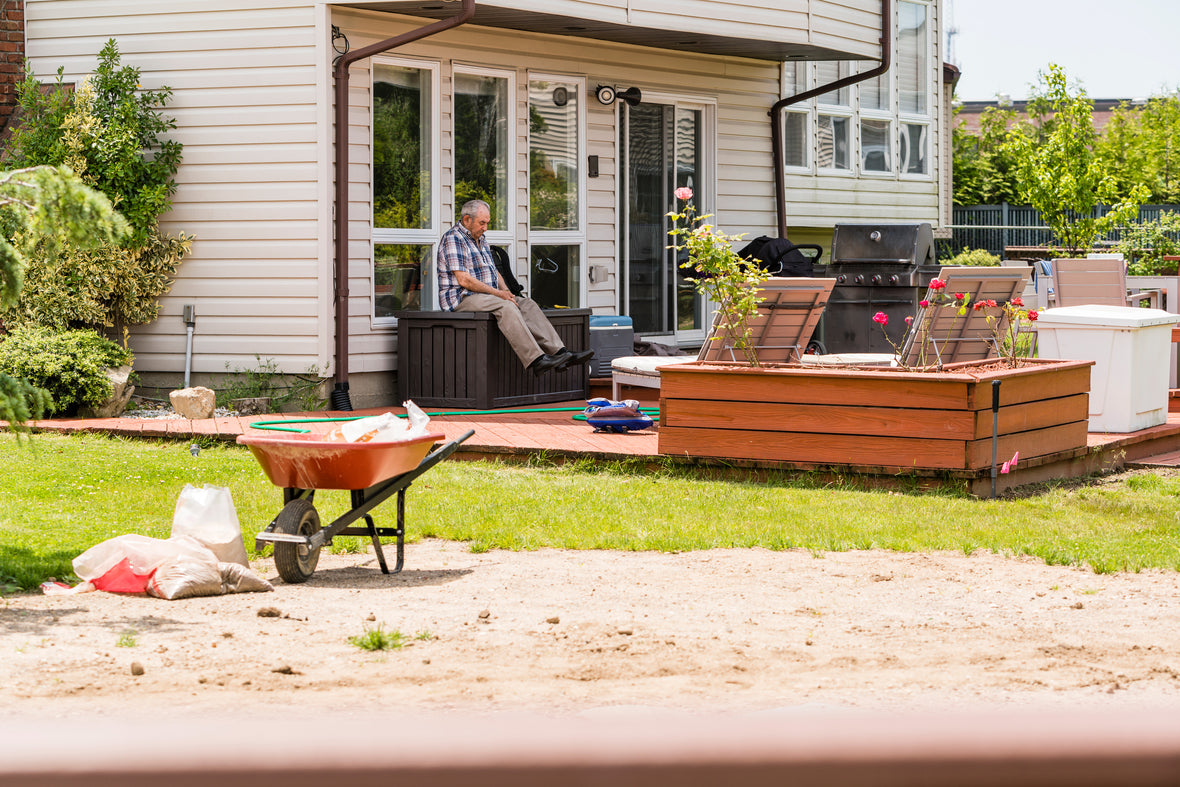
Lawn Culture &Why is the grass greener on the otherside
Lawn Culture is a culture in which large areas of green lawn are seen as a way to beautify homes and communities in places such as the United States. It has significant social acceptance and historical tradition.
In America, lawns are considered an important part of homes and neighborhoods, and people spend a great deal of time and money maintaining and landscaping their lawns to increase the value and appeal of their homes and neighborhoods. American lawn culture can be traced back to the 18th century when the yards of European aristocrats were often planted with lawns, a style that was gradually imported to the U.S. and gained widespread acceptance. In the 20th century, lawn culture developed further and became a signature feature of American homes and community beautification.

The development of lawn culture in America has also been influenced by technology, such as the widespread use of automated irrigation and weed whackers, which have made it easier to maintain lawns.
People often use lawnmowers to regularly mow their lawns to ensure that they remain neat, level, and green. In addition, to keep their lawns healthy, people usually engage in the following activities:
- Watering: In the early dry season, people will water their lawns using an irrigation system or hand waterer to ensure that their lawn receives enough water.
- Fertilizing: People will fertilize their lawns regularly to replenish missing nutrients in the soil and to promote the growth and health of the lawn.
- Weed control: People use herbicides or hand weeders to remove weeds from their lawns to ensure that the lawn is neat and beautiful.
- Aeration: To promote healthy and growing lawns, people use specialized equipment to aerate their lawns to increase the permeability of the soil.

However, the lawn culture has also come under some criticism, including the waste of water resources, the environmental impact of the use of chemicals and herbicides, and the planting of grass species that are not adapted to local climate and soil conditions in some areas.
- As a result, some advocate for more sustainable and environmentally friendly ways to beautify homes and neighborhoods, such as planting native plants, adopting water-friendly landscaping, and reducing the use of chemicals.
- In addition, neighbors are very mindful of each other Gardening, lawn, and tree pruning are also common practices. If a neighbor notices an overgrowth of branches or weeds or other problems in their lawn or garden, they will typically communicate with the neighbor and ask for a joint solution.
- In many communities, neighbors also help each other out, such as sharing lawnmowers and other maintenance equipment and working together on community beautification and improvements.
- Of course, sometimes disputes and controversies arise. This is usually due to differences in the standards of maintenance of lawns and gardens between neighbors, or because one party feels that the other is not respecting their private space. In such cases, neighbors usually need to engage in more communication and negotiation to reach a consensus.

“Why is the grass greener on the other side” or“Why does everyone else's grass seem greener” is a widely known English proverb and cultural phenomenon. It is a widely known English proverb and cultural phenomenon. It is used to express the psychological state of people who often aspire more to what others have and are not satisfied with what they have.
This problem is in a way a common psychological phenomenon called "social comparison". People often compare themselves to others to assess their happiness and success. When people notice that someone else's lawn is greener than their own, they may feel that their life or accomplishments are not as good as someone else's, and thus feel lost or frustrated.
However, it is important to note that people often only look at the surface of other people's lives and do not understand the stories and experiences behind them. A lawn that looks green and lush may take a lot of time, effort, and resources to maintain. In contrast, a lawn that looks less green may be because the owner didn't spend much time and effort caring for it, not because they didn't try hard enough.
Therefore, when we feel that our lawn is not as good as others, we can try to focus on our accomplishments and strengths, rather than just focusing on the surface of others. We can also try to improve our situation instead of just blaming others for our good fortune.
Most importantly, we should recognize that everyone has their own experiences and stories, and we can't just judge them on the surface of their lives.

